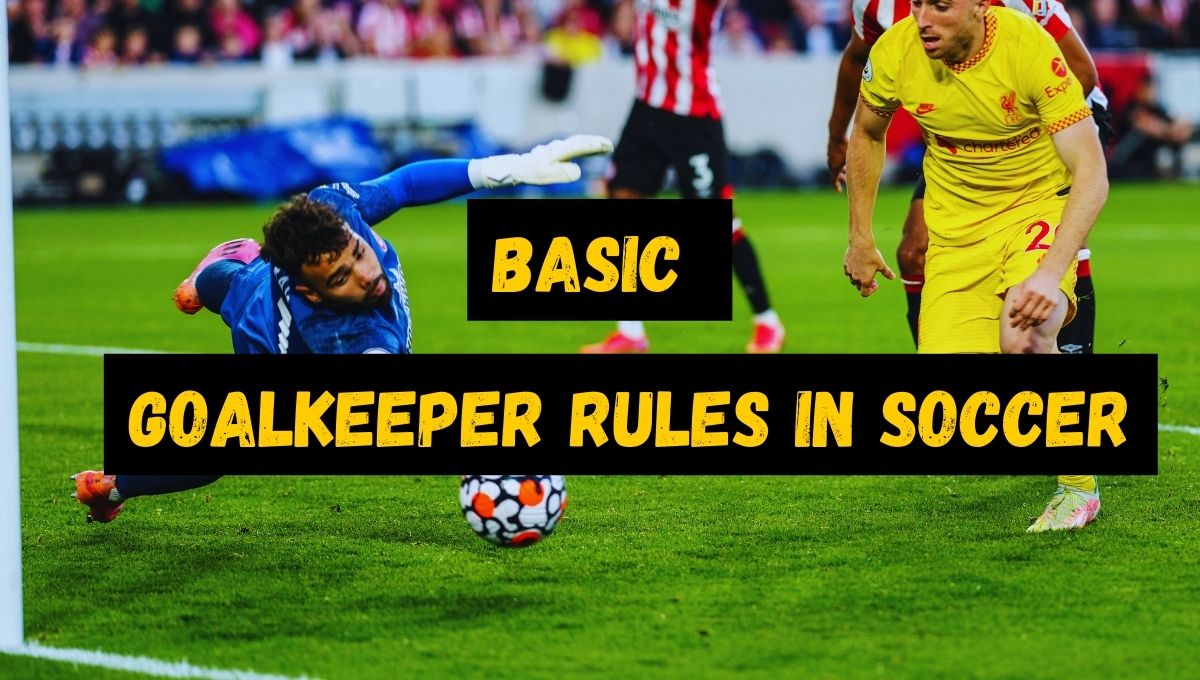In soccer, one position stands out as the last line of defense – the goalie. Their performance can make or break a match. But what are the rules that govern this critical position?
In this guide, we will discuss the basic goalkeeper rules. How they are different from other players and their strengths and limitations.
Whether you’re a player, a coach, or simply a fan, read on to explore the regulations that define the art of goalkeeping in the beautiful game.
7 Basic Goalkeeper Rules In Soccer:
1. Handling the Ball
Goalkeepers are the only players allowed to handle the ball with their hands and arms, but there are specific restrictions:
- They can do so only inside the penalty area: Goalkeepers are permitted to pick up the ball, use their hands to pass it, or stop shots with their hands within the penalty area. The penalty area is a rectangular box located in front of the goal, measuring 44 yards wide and 18 yards deep. It’s within this area that fouls against the attacking side can result in a penalty kick.
- Outside the Penalty Area: When a goalkeeper steps outside the penalty area, they are regarded as regular outfield players and lose the privilege of handling the ball with their hands. If a goalkeeper handles the ball outside the penalty area, the opposing team is awarded a direct free-kick from the spot where the handling occurred.
2. Goal Kick
According to the rules, if the ball goes out of play over the goal line without entering the goal, due to the last touch being made by an attacker, the goalkeeper takes a goal kick. Alternatively, any other player from the defending side can take the goal kick or pass the ball to a teammate.
During a goal kick, the ball must exit the penalty area before it’s considered in play. This means that no other player can touch the ball until it has left the penalty area.
For a comprehensive understanding of all the goal kick rules, watch this video:
3. Handling from a Back Pass
In the past, goalkeepers were permitted to handle a deliberate back pass from their teammates. However, this rule has changed.
Nowadays, a goalkeeper cannot handle the ball with their hands if a teammate deliberately passes it to them using their feet. If a goalkeeper does so, an indirect free-kick is awarded to the opposing team from the spot of the offense.
4. Six-Second Rule
To avoid time-wasting, goalkeepers have a limit of six seconds to release the ball after gaining full control of it.
If they hold on to it for longer than six seconds, they can be given a yellow card by the referee or there can be an indirect free kick from inside the penalty area.
Check out these interesting free kicks from inside the box in the video below:
5. Penalty Kick Rules
When facing a penalty kick, the goalkeeper must keep at least one foot on the goal line and cannot move forward until the ball is kicked.
However, they are allowed to move laterally along the goal line before the kick is taken.
6. Attacker’s Encroachment during Penalty Kick
If the goalkeeper saves a penalty kick, but an attacking player encroaches into the penalty area before the kick was taken, the penalty is retaken.
If the goalkeeper parries the shot and the ball is still in play, the encroachment is ignored, and play continues.
7. Goalkeeper’s Diving at Feet
Goalkeepers must exercise caution when diving at the feet of onrushing attackers. Reckless challenges that endanger the safety of opponents may result in a foul or even a yellow or red card.
Final Word:
It’s essential to note that rules and regulations can vary slightly based on different football associations and competitions.
The rules mentioned above are based on the standard FIFA laws of the game.
If you want to know more about goalkeepers, check out these do’s and don’ts of goalkeeping:

